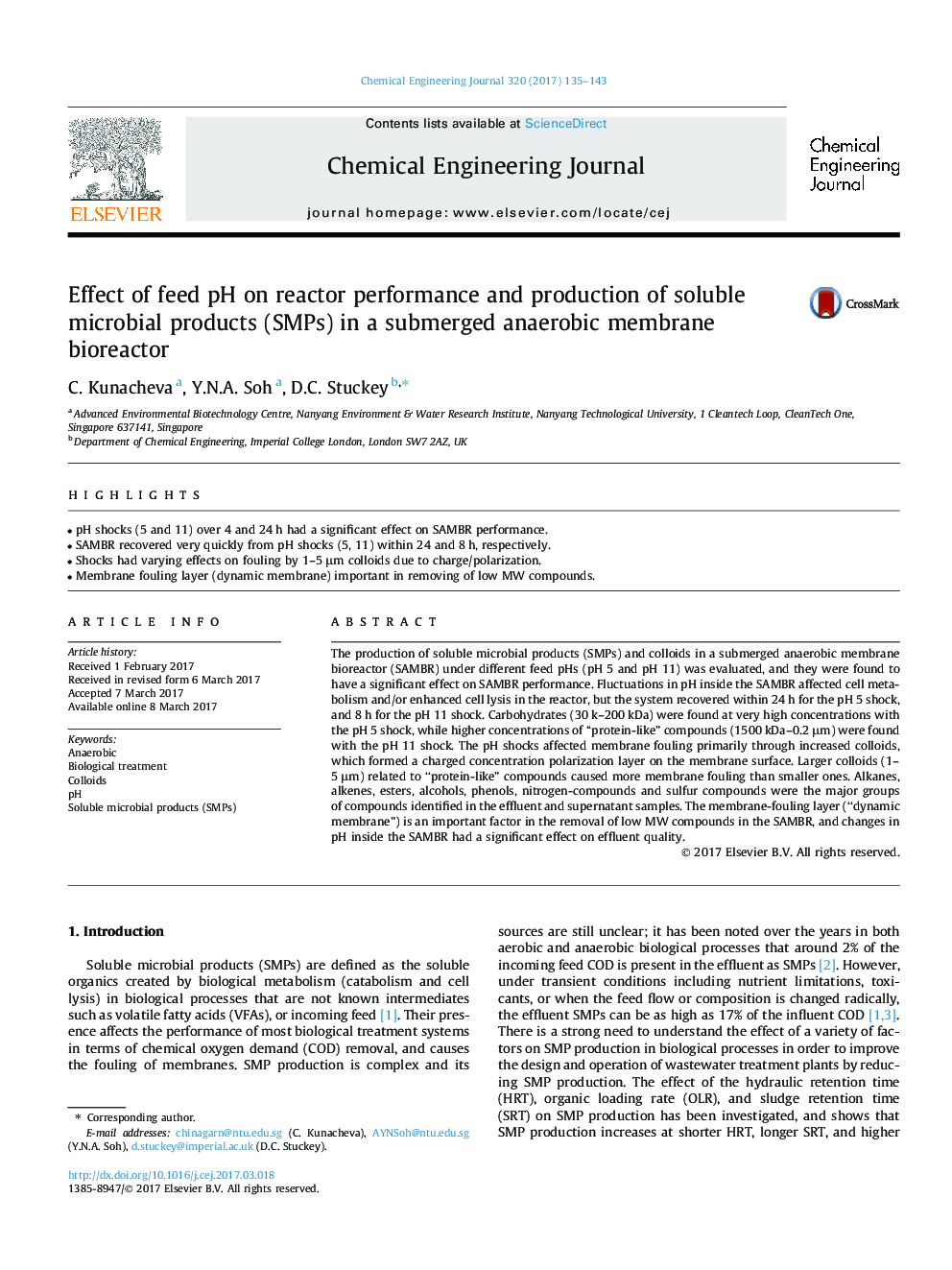| Article ID | Journal | Published Year | Pages | File Type |
|---|---|---|---|---|
| 6465923 | Chemical Engineering Journal | 2017 | 9 Pages |
â¢pH shocks (5 and 11) over 4 and 24 h had a significant effect on SAMBR performance.â¢SAMBR recovered very quickly from pH shocks (5, 11) within 24 and 8 h, respectively.â¢Shocks had varying effects on fouling by 1-5 μm colloids due to charge/polarization.â¢Membrane fouling layer (dynamic membrane) important in removing of low MW compounds.
The production of soluble microbial products (SMPs) and colloids in a submerged anaerobic membrane bioreactor (SAMBR) under different feed pHs (pH 5 and pH 11) was evaluated, and they were found to have a significant effect on SAMBR performance. Fluctuations in pH inside the SAMBR affected cell metabolism and/or enhanced cell lysis in the reactor, but the system recovered within 24 h for the pH 5 shock, and 8 h for the pH 11 shock. Carbohydrates (30 k-200 kDa) were found at very high concentrations with the pH 5 shock, while higher concentrations of “protein-like” compounds (1500 kDa-0.2 μm) were found with the pH 11 shock. The pH shocks affected membrane fouling primarily through increased colloids, which formed a charged concentration polarization layer on the membrane surface. Larger colloids (1-5 μm) related to “protein-like” compounds caused more membrane fouling than smaller ones. Alkanes, alkenes, esters, alcohols, phenols, nitrogen-compounds and sulfur compounds were the major groups of compounds identified in the effluent and supernatant samples. The membrane-fouling layer (“dynamic membrane”) is an important factor in the removal of low MW compounds in the SAMBR, and changes in pH inside the SAMBR had a significant effect on effluent quality.
